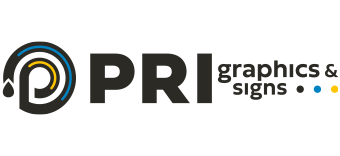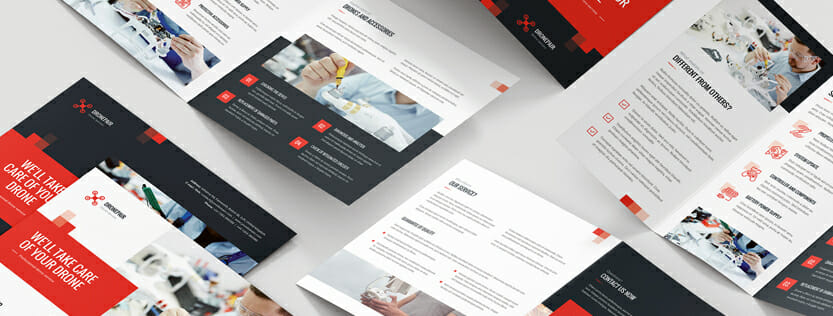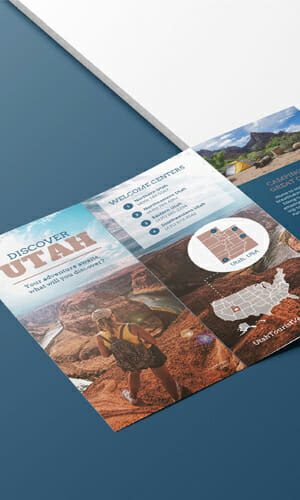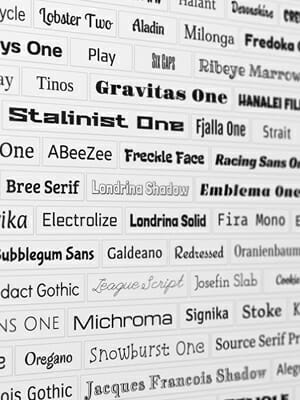Brochure Design & Printing – How To Guide
Read time: 5 minutes | Author: PRI Graphics | Posted: January 19th, 2023
Tips on How to Design & Set Up Brochures for Print
As a professional print shop, our print experts here at PRI Graphics can provide excellent help whenever you need brochure design and printing.
Tri-fold brochures are a great way to present information about your business, product, or service in a compact and easy-to-read format. However, designing and formatting a brochure can be tricky if you’re unfamiliar with the process.
There’s a Difference Between a Brochure, Flyer, and Leaflet.
In this article, we will go step-by-step through the brochure design and printing process. This way you can design, format, and print a tri-fold brochure that looks professional and effectively communicates your message and branding.
If you’re needing to reach out to speak with a print professional now, call us locally at 602-393-3131 or toll-free at 1-877-409-8889.
Setting Up Your Brochure Design
Step 1: Think About the Brochure Layout
First, it’s important to consider the layout of your brochure. A typical tri-fold brochure has three panels, with the middle panel being the largest and the outer panels slightly smaller.
This layout allows you to include a lot of information in a small space, but it also means that you need to be careful about how you organize your content. One way to do this is to use a grid system, which helps you align text and images in a visually pleasing way.
Step 2: Color Scheme in Brochure Design
Next, think about the color scheme of your brochure. Make sure your branding is consistent throughout all mediums, especially when it comes to brochure design and printing.
It’s important to choose colors that are consistent with your branding and that are easy to read. Avoid using too many colors, as this can make the brochure look cluttered and hard to read.
If your business has design standards including specifically branded colors, then be sure to utilize those throughout the tri-fold brochure design.
Here is a great article about the Psychology of Color in Marketing and Branding.
Step 3: Font Selection in Brochures
When it comes to typography, keep it simple and easy to read. Avoid using too many different font styles and sizes, as this can make the brochure look unprofessional.
Stick with one or two font styles for headings and body text, and make sure the text is large enough to be easily read. Also, avoid skewing or distorting text as this can cause issues with legibility as well.
Step 4: Use of Images in Your Brochure
Images are also an important element of your brochure design and printing. Images can be used to break up blocks of text and add visual interest.
However, we recommend using high-resolution images, as low-resolution images can appear grainy when printed. Also, make sure that images are placed in a way that doesn’t interfere with the readability of the text.
The way your images will be printed is also a factor. See our post on Raster vs Vector graphics.
Step 5: Formatting a Brochure for Printing
Once you have your brochure design and printing layout established, it’s important to set it up properly for the printing company. Here are a few things to keep in mind:
- Make sure your brochure is in the correct size and format. Common sizes for tri-fold brochures include 8.5×11 inches and 11×17 inches. Be sure to check with our print professionals to see what sizes we can print and if we have any specific requirements. Check out our templates page to get started.
- Use the correct resolution for images and graphics. Most printers require images to be at least 300 dpi (dots per inch) for optimal printing quality.
- Use the correct color mode. Like most printers, we require files to be in CMYK color mode, which stands for cyan, magenta, yellow, and black. This is different from the RGB color mode used for digital displays. Learn more about CMYK vs RGB.
- Include bleed and margin. Bleed is the area around the edge of the brochure that gets cut off during the printing process, and margin is the space between the edge of the brochure and the content. Most printing companies will likely have specific requirements for bleed and margin, so be sure to check that out.
Save your file in a print-ready format. Common formats include PDF, TIFF, and EPS. Make sure to check with our printers to see if we have any specific format requirements. The most common format will be PDF. Learn more about Paper and Factors Affecting Print Quality.
Step 6: Proofreading & Easy Reading
One last note, make sure to proofread your brochure before printing. Double-check for any typos or grammatical errors. This will help ensure that your brochure looks and reads professionally. By taking the time to properly set up your brochure design and printing, you can ensure that it will look great when it’s printed and that your message and branding are communicated effectively.
Your reader is likely pressed for time. Once you’ve caught their attention and they have opened the brochure, you need to make your inside copy easy to skim and glance over. Good marketing brochure design includes bullet points and lists along with clear headings to make it easier for the reader to take in the main points without having to read every single word.
Conclusion
Designing and formatting a tri-fold brochure for printing is a bit tricky. With these steps, you can create a brochure that looks professional and effectively communicates your message. Consider the layout, color scheme, fonts, typography, images, and proofreading before printing.
With a little bit of planning and attention to detail, you can create a brochure that stands out and gets noticed.
About PRI Graphics & Signs in Phoenix AZ
In 2022, PRI Graphics & Signs celebrated our 20th anniversary. We take a lot of pride in serving the needs of business owners and individuals throughout Arizona and across America!
Whether you need signage, a single print job, managed printing services, or help with brochure design and printing, no job is too small or too big.
Reach out to us by email and print professionals will be happy to answer any questions you may have.
We can also be reached by calling directly at 602-393-3131 or toll-free at 1-877-409-8889.














